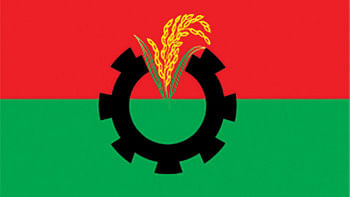Identity Crisis: Current Challenges

GLOBALLY every individual has two primary identities national and religious, which usually do not contradict with each other. Pakistan was created in 1947 as the homeland of Muslims of India based on the two nation theory in contravention to fundamental principles of cultural and historical basis of nationhood. Most countries of the world are nation-states where people of different faiths pursue their religious practices. There can be multinational countries like India, but for such countries to sustain, thriving democracy with strong federal structure is essential. Rulers of Pakistan were adverse to such ideas; so democracy was denied and military rule was put in place.
During Pakistani rule, the religion based two-nation theory was designed to drive a wedge between our religious and national identity. National culture based on geographical premises, history and heritage is a primary indicator of national distinction. So, the Bangali language and culture were the first casualties of the repressive regime. Hence struggle of Bangalis was essentially for democracy and cultural and national self-determination. Pakistan ruler's denial of national rights, their refusal to accept popular verdict of first ever all-Pakistan general election of 1970 based on adult franchise and in the aftermath of genocide lead to liberation war. Here, we retained our religious identity to create nation state Bangladesh.
Bangladesh liberation war was not a secessionist movement. Emergence of Bangladesh was a qualitative departure from Islamic Republic of Pakistan. Bangladesh was born as a democratic secular country as reflected in four state principles of 1972 constitution, the principles earned through struggle for national rights during Pakistan period. Then whether recorded or not in constitution, these are universal principles of all modern developed countries.
After independence, we believed the country had buried forever the 1947 mindset and that identity crisis will gradually disappear. Four decades on, one must admit that such expectations were proved to be somewhat incorrect. Identity crisis as to whether religion or nationalism will be driving force remained in many individual minds, society and even in the decision making process. This has been accentuated by carefully planned efforts following assassination of Bangabandhu and some global & local politics. Deeper analysis is necessary from vantage points of historical, social and current global perspective for revival of aforesaid basic premises for which we fought liberation war.
Historical Social Perspective
Bangalis for centuries lived in self governed liberal pluralist society. Although there always had been some social and psychological barriers, people of different faiths lived in peace and harmony. Muslim invaders came to India to win it culturally. But they eventually ruled through synthesis of Central Asian and Indian culture. Moreover Bangali minds, irrespective of religious beliefs, were more influenced by folk poets and singers than ideology of rulers.
However, during British period, muslim elites chose to stick to conservatism and deprived themselves of modern secular education and did not generally participate in all Indian anti-colonial struggle. Consequently, social and job-related deprivation created pleasing playground for British rulers for their divide-and-rule policy. All these lead to increasing gap between Hindus & Muslims; overwhelming Muslim youths supported cause for separate homeland and Pakistan was created in the aftermath of communal riots. However there remained a basic positive trend. Historian Salahuddin Ahmed rightly stated that mainstream parallel existence of liberal spiritial Baisnabbad and Sufism lead foundation for harmonious humanist society in Bengal throughout the entire period.
So creation of Pakistan based on religious divide was an aberration in the entire process. The language movement (1948-1952) which carried nascent aspiration for national self-determination was lead by first generation of educated muslims. Young muslim youth supporters of Pakistan movement such as Bangabandhu or Tajuddin Ahmed gradually got disillusioned and took leadership of emerging middle class.
Democratic nationalist movement on political, economic, social and cultural front overlooked communalism and there was no interreligious confrontation after short lived 1964 riot engineered by rulers. The continuing struggle reached its high point in '6-point' demand of Bangabandhu (1966) and Student Action Committee's '11-point' demand (1968) which carried the national aspiration of overwhelming people.
Current Challenges
After independence, divisive contradictory trends surfaced in society, particularly due to local political and global changes. Liberation War was the struggle for national emancipation with Bangabandhu symbolising national unity. After downfall of repressive Pakistani regime, people had huge expectation from founders which were difficult to achieve in war ravaged country. Despite some significant achievements by short lived Bangabandhu's administration, abuse of power and rent-seeking by political ranks and finally creation of one-party BAKSAL rule by the champion of democracy in Pakistan days were not perceived well by people at large and there developed alienation of Government with middle class in particular.
In this background in 1975, Bangabandhu was killed and to our utter dismay there was hardly any political protest by the people. In a country born through long drawn democratic movement, almost half of last four decades was ruled by military regimes. Entire scenario changed. Democracy banished, anti-liberation forces rehabilitated, pro-religious organisations made lawful and the four founding principles revised. Eventually in 1991, pro-democracy upsurge resulted in return to rule of elected governments. But there were no serious effort to strengthen democratic institutions. Meantime while the ruling party followers were more busy making money through abuse of whatever power one had, the pro-religious forces armed with new rigid Wahabi version of Islam reached every house. Madrasa education thrived, even those without any government control in curriculum or their funding from abroad.
They attracted poorer sections of society with offers of free food and lodging. 1 in 4 school students of Bangladesh are from madrasa. Some of these religious schools turned into safe havens for development of Jihadis, some well educated students of private universities also joined them as home grown terrorists. Dedicated secular political and social forces were generally oblivious of such changes in the society. Rather, since religion is considered as a sensitive real time issue for gaining political support, political parties were either overcautious or for the worse one major party allied with fundamentalist forces. In this context, as what is considered a realistic measure although secular ruling political party reintroduced all four founding principles including secularism in constitution, Islam was retained as state religion. Worst victims were the religious and ethnic minority. However, here local musclemen's primary target was not religion but grabbing land and creating trouble for socially disadvantaged minority teenage girls. Consequently, silent migration of religious minority (Hindu) is observed, the number declined from 23 percent in 1972 to single digit of 9 percent in 2011. This is worst scenario for a secular democratic or any modern country.
In the global context, two events had significant impact on our society. Firstly, the Socialist camp almost disappeared leading to an unbalanced unipolar world led by the United States. Secondly, after the 9/11 tragedy in 2001, Western powers embarked on a “war on terror”. In practice their “regime change” theory more from economic vantage point was at best counterproductive. It has alienated Muslims world over and resulted in resurgence of religious extremism. Liberal Sufism is gradually replaced by rigid Wahhabi practices affecting lifestyle and attitude of Muslims globally and Bangladesh is no exception.
Nevertheless, there is unmistakably positive trend primarily resulting from significant development in information technology owned and nurtured by the younger generation. Bangladeshi youth, both urban and rural supplemented by some innovative government programmes, are in the driving seat of sustained economic growth and improvement in social indices. These youth are competing with the world through best use of information technology. Gonojagoran Mancha created in February 2013 for trial of war criminals reflects a phenomenon that younger generation of all shades of opinion, however apathetic to political squabbles, holds in their heart, the fundamental spirit of Liberation War. In spite of split in the Mancha the phenomenon exists in their hearts undeterred by killing of online activists by religious extremists.
There is undeniably huge generational gap between this internet-friendly youth and political and social leadership who carry experiences of their victorious struggle of '60s and '70s. Moreover there exists risk of their alienation due to abuse of power by identified political ranks. However, I believe, in spite of all odds majority of people are still eager to rebuild democratic secular Bangladesh. No believers accept use of secret killings in the name of religion.
In the above background, there is deep and extensive divide in the society and the identity crisis has deepened in many minds. But if we can take cognizance of aforesaid social trends, with pragmatic united political and social movement, revival of spirit of Liberation War is achievable.
The writer is Trustee, Liberation War Museum.

 For all latest news, follow The Daily Star's Google News channel.
For all latest news, follow The Daily Star's Google News channel. 



Comments